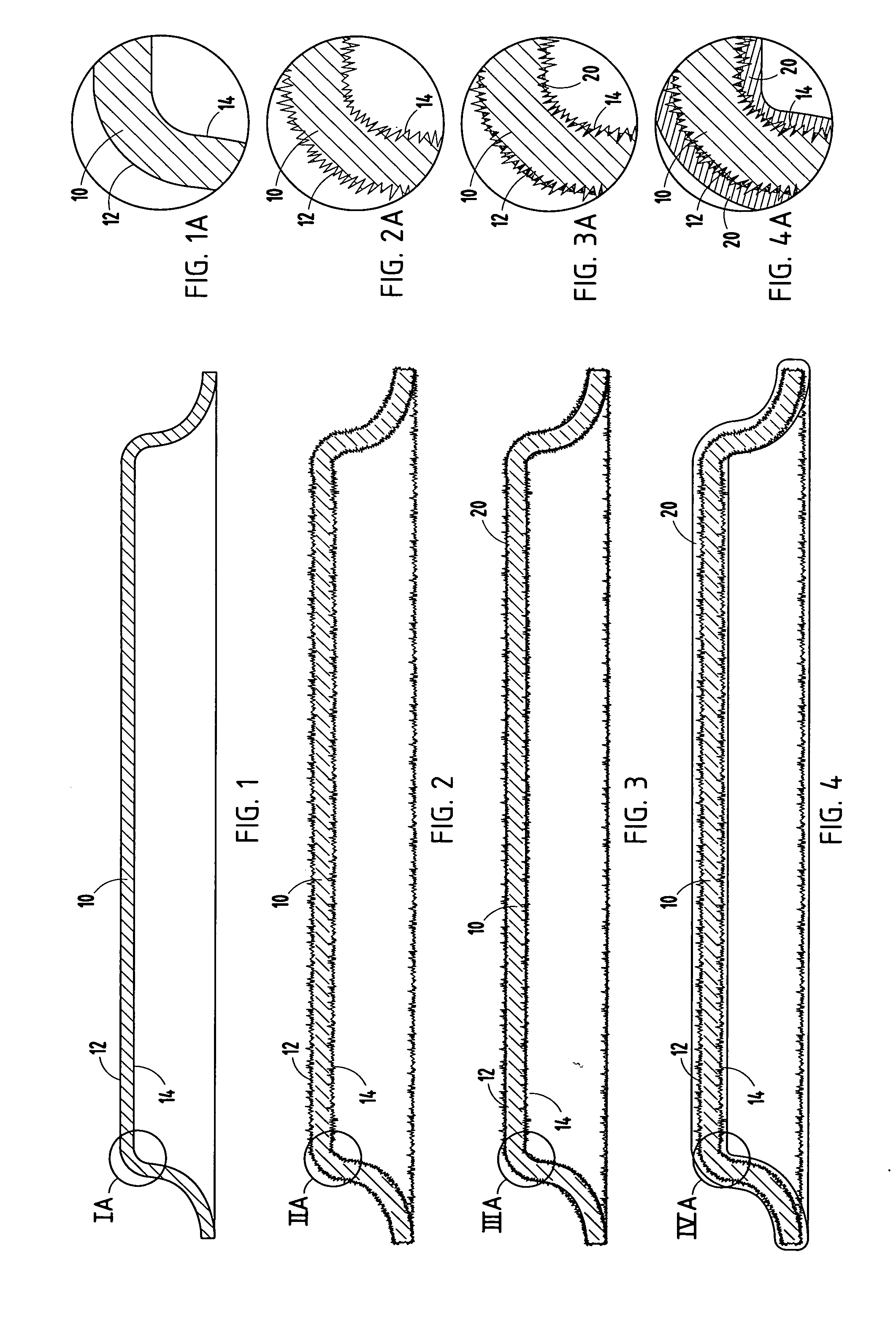Method to signficantly increase electrophoretic coating thickness and/or to provide a conductive electrophoretically coated surface
a technology of electrophoretic coating and coating surface, which is applied in the direction of fluid pressure measurement, liquid/fluent solid measurement, peptide, etc., can solve the problems of porous coating, coating with pores or breaks, and inacceptable aesthetic and functional perspectives, so as to achieve thicker coatings and thin coatings
- Summary
- Abstract
- Description
- Claims
- Application Information
AI Technical Summary
Benefits of technology
Problems solved by technology
Method used
Image
Examples
Embodiment Construction
[0025]In accordance with certain aspects of the invention, there is provided a low-cost solution for developing thicker electrophoretic coatings on substrate surfaces while using conventional electrophoretic coating compositions. In certain other aspects, the invention provides a low-cost solution for providing electrically conductive electrophoretically coated surface while using conventional electrophoretic coating compositions. In certain aspects, the invention allows “dual coatings” on substrate surfaces to create a two or more layer or laminated electrophoretic coating system. More specifically, a part can be provided with multiple electrophoretic coating layers or lamina that can, for example, have different colors and / or different coating performance specifications. For example, a first electrophoretic coating could be rich in corrosion inhibitors, while a second electrophoretic coating layer could be an abrasion and / or ultraviolet-resistant layer.
[0026]As used herein, the te...
PUM
| Property | Measurement | Unit |
|---|---|---|
| height | aaaaa | aaaaa |
| thickness | aaaaa | aaaaa |
| thickness | aaaaa | aaaaa |
Abstract
Description
Claims
Application Information
 Login to View More
Login to View More - R&D
- Intellectual Property
- Life Sciences
- Materials
- Tech Scout
- Unparalleled Data Quality
- Higher Quality Content
- 60% Fewer Hallucinations
Browse by: Latest US Patents, China's latest patents, Technical Efficacy Thesaurus, Application Domain, Technology Topic, Popular Technical Reports.
© 2025 PatSnap. All rights reserved.Legal|Privacy policy|Modern Slavery Act Transparency Statement|Sitemap|About US| Contact US: help@patsnap.com


